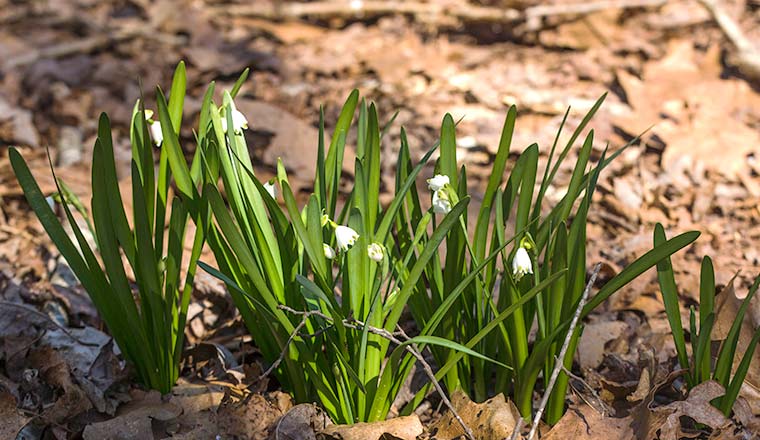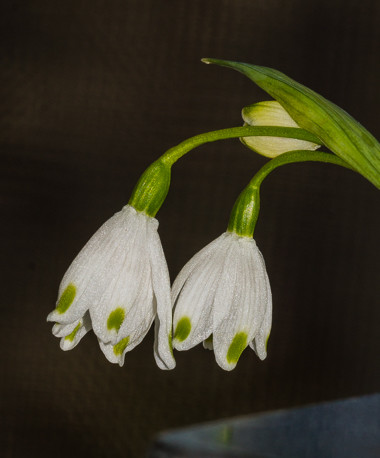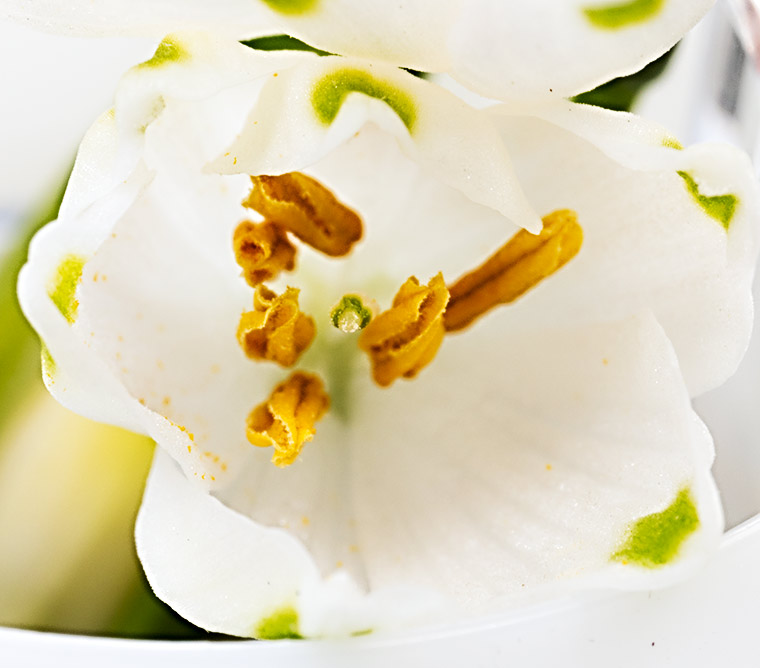Another sign of Spring is in our yard! These delightful little Snowflakes (Leucojum sp.) have been blooming for quite a while, and I finally got around to taking some pictures of them. These handsome plants grow from bulbs, and they are commonly found as escapes in our area. I think we dug these up along a railroad track right of way. They grow from bulbs, so they are easy to transplant. Another big advantage is that deer do not eat them. They seem to grow anywhere with no care. Ours are growing in thick clay soil under trees. We have never fertilized them, we don’t water them, and no insect pests or diseases seem to bother them.What more could you want in an ornamental plant?
Many people call these plants “Snowdrops”, but that name is more properly used for another genus, Galanthus).
The genus Leucojum is native to Eurasia, and it is a member of the Amaryllis family..Usually, it is said to have only two species, the Summer Snowflake (L. aestivum) and the Spring Snowflake (L.vernum). Leucojum means “white violet” in Greek.
I believe the ones we have are Summer Snowflakes (L. aestivum), despite the fact that they bloom in the winter here. In the photograph above, one can see the neat little green spots near the end of each tepal*. Other common names for this plant include St. Joseph’s Bells, snowbells, St. Agnes’ flower, and dewdrop. These flowers are less than one inch long.
A closer look at the inside of the flower shows that each of the six yellow anthers has already split open to release pollen. The green and white small structure in the middle of the flower is the female part of the plant, made up of the style and the light-colored stigma, which receives the pollen, nearest the camera.
*(The 25 cent botanical term “tepal” probably deserves a bit of explanation. In many flowers, one can distinguish the petals, which are a ring of several ornamentally-colored parts of the flower from another of structures outside the ring of petals. This outer ring of more leafy-looking, often green structures are called sepals. When the petals and sepals of a flower are so similar that one cannot tell them apart, they are all called “tepals”. There are clearly six structures, each with a green spot at the tip, in our snowflake flower, but they are all similar, hence they are called tepals. The next time you are in a large grocery store, take a look at the flowers on display to see if you are able to distinguish petals and sepals.)
Discover more from A Naturalist's Journal
Subscribe to get the latest posts to your email.



